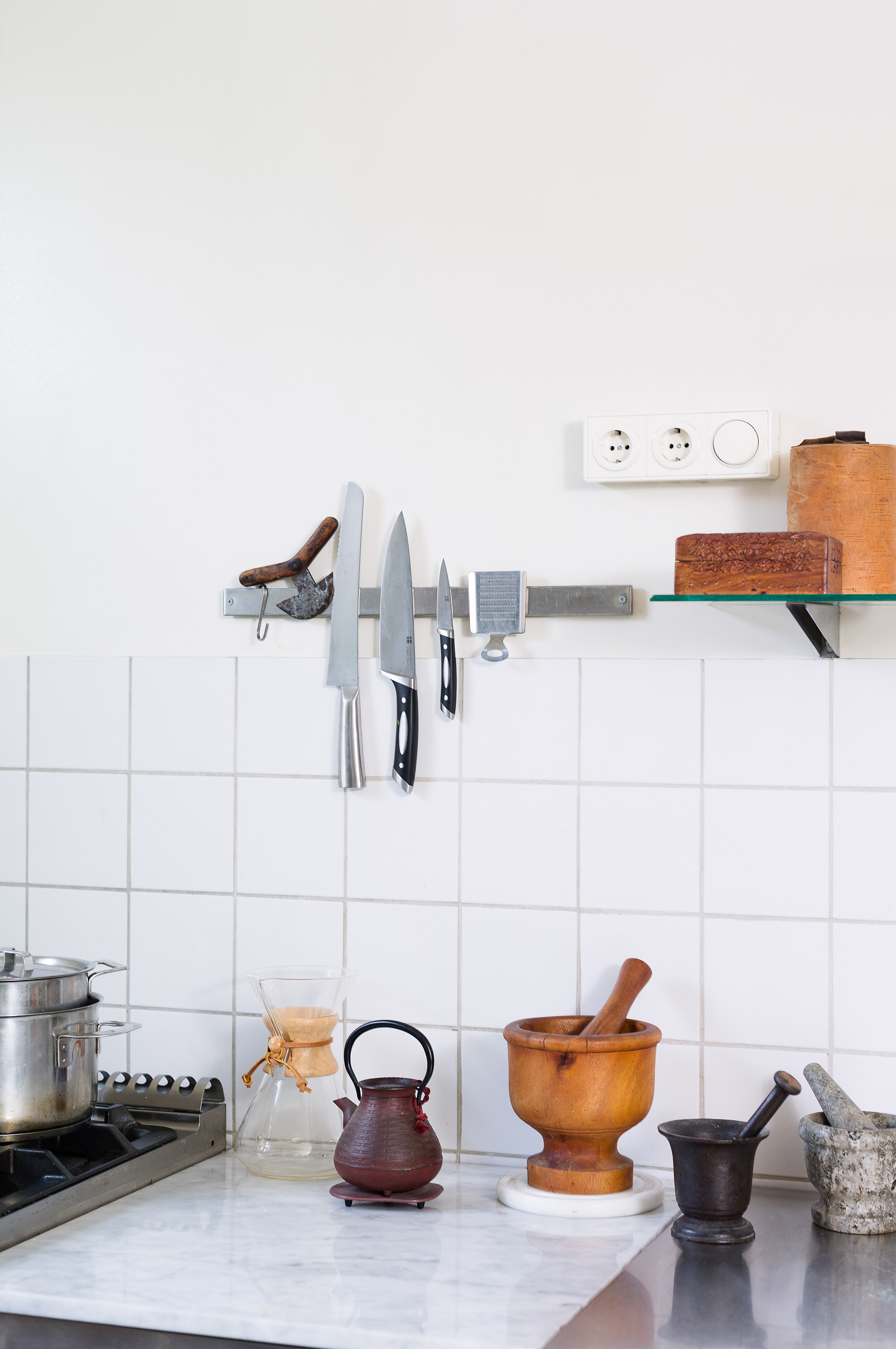Solo, Lisbeth Funck

Architect and artist Lisbeth Funck lives in the midst of art, architecture and avocado plants.
We sit in her apartment at St. Hanshaugen in Oslo, in an apartment that could have been in any other major city. It feels like being outside of Norway. Something continental, something away from it all.
When we first moved in, the apartment had been for rent for a long time. Everything was so fatigued, there was no bathroom and wallpaper hung from the walls. We didn´t have the money to refurbish everything at once, so we took our time", says Lisbeth Funck.
By letting the apartment develop and live bit by bit, it has gained a timeless expression.
- I didn´t have one overriding thought or concept – except from aiming for clean. I try to keep it simple. I'm no a colourist, and the apartment also has limited direct sunlight - thus all surfaces are painted white. The light comes in the afternoon, and then stays until eight to nine o'clock in the evening during the summer. It's just fantastic – a shower of light.
At the moment she feels the apartment has too many things.
It´s too crowded. That is, too many organic elements - in the form of an avocado forest.
I just started to put some avocado stones in the earth, and thought it was a bit of fun... I'll have to see what to do with them now they have grown so tall and many, I have to come up with something ... I have a friend who bought a farm outside of Oslo. I hope one day they can move to her greenhouse.
When Lisbeth Funck renovated the apartment, it was important to her to keep the room structure. Many of the original materials, such as stucco and moldings, had been removed or destroyed.
I didn´t reverse anything to it´s original form, instead I replaced and simplified. All wall surfaces are new, the floors were sanded and painted gray and ceilings plastered and painted white. The apartment lacked several doors - the new narrow pine doors to the bathroom and the bedroom were designed and produced while some of the old double doors were found in containers. The apartment is characterized by its history and many different time layers are visible here.
The apartment originally had it´s kitchen and servant's room facing the backyard. Lisbeth reversed it, so that the kitchen got more light, she had space for a larger bathroom, and then placed the bedroom in towards the quiet backyard.
I´m happy with this solution but if I were to do it again today I think I would have kept more of the original layout and left the kitchen were it was. Of course it's nice to have a large kitchen, but I don´t really need it. I would have had more use of a larger library, she says.
The books are presently stacked on the walls of the long corridor. It´s packed with shelves along one of the walls, and soon the other side will follow.
Old buildings and apartments like this lack storage space and it´s a challenge to find space for it all. Fitting a library in the hallway is an attempt to activate a room usually only used for walking.
Funck says preserving the original features is about taking care of the apartments´ qualities.
Some people tear down all the walls in a house without thinking much about it, but you need to do it carefully. Some of the house's inner structure and dynamics can disappear. It´s easy to add element when you´re refurbishing a house but you need to exercise caution whatever you do. In Oslo it's difficult to find old houses and apartments with the original layout and details – everything has been refurbished. We tear down too much.
In periods Lisbeth Funck has used parts of the apartment as her studio.
I'm working on a research project linked to the Architect and Design Academy in Oslo. I´m working with drawings and models in large formats.
Her projects may appear to borderline art, in the same way that architecture also has an artistic dimension.
When I work my point of departure is architecture. But art is also an aspect in architecture, as in music and other art expressions. There is an on going discussion about the relation between the practical and the artistic in an architectural work. For me it is important not to close and lock the discussion or set the two as opposites. One dimension enriches the other. I want to contribute to the discussion by, based on my research, formulating a way to understand this.
WORDS : Annicken Vargel PHOTOS: Elisabeth Aarhus














































